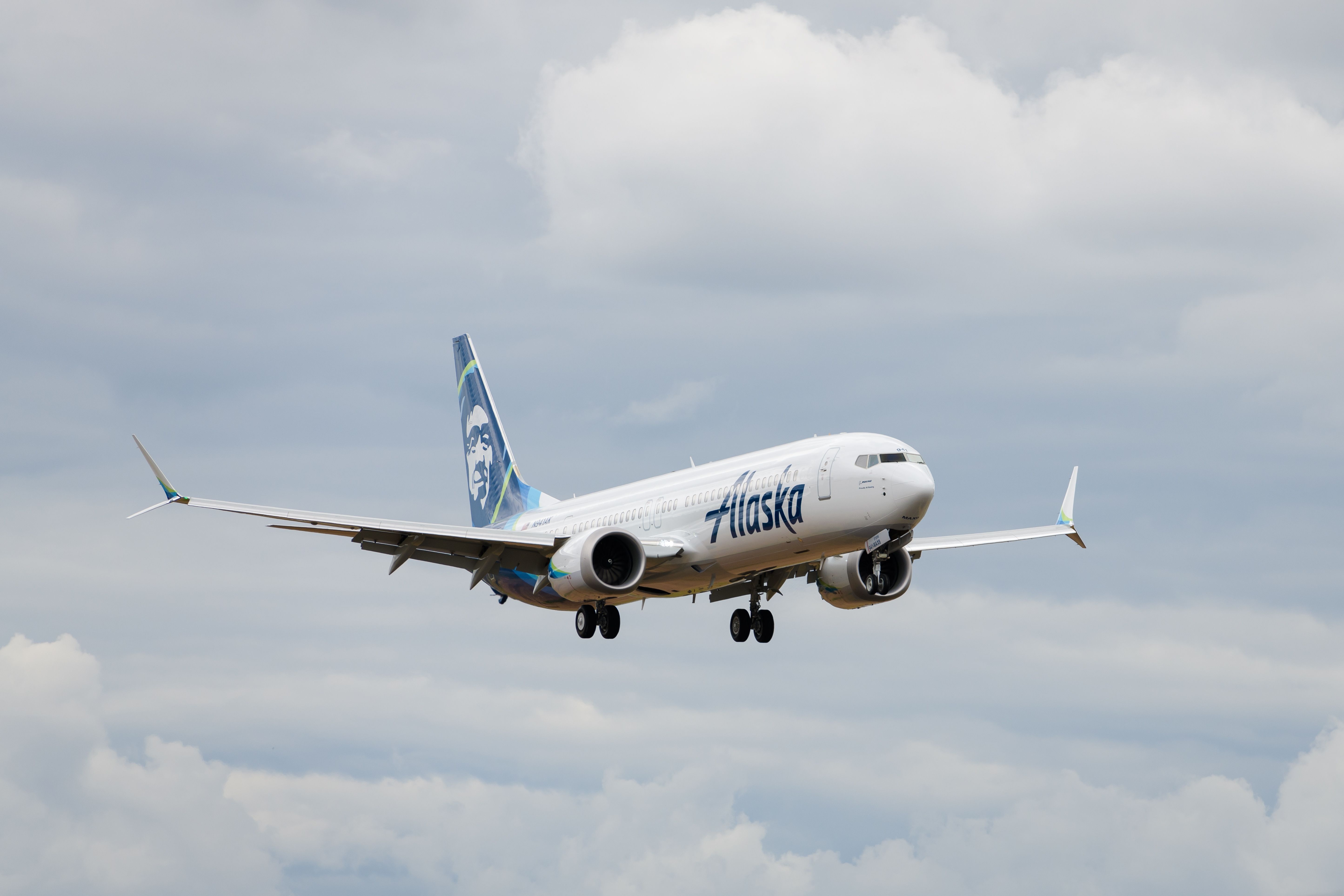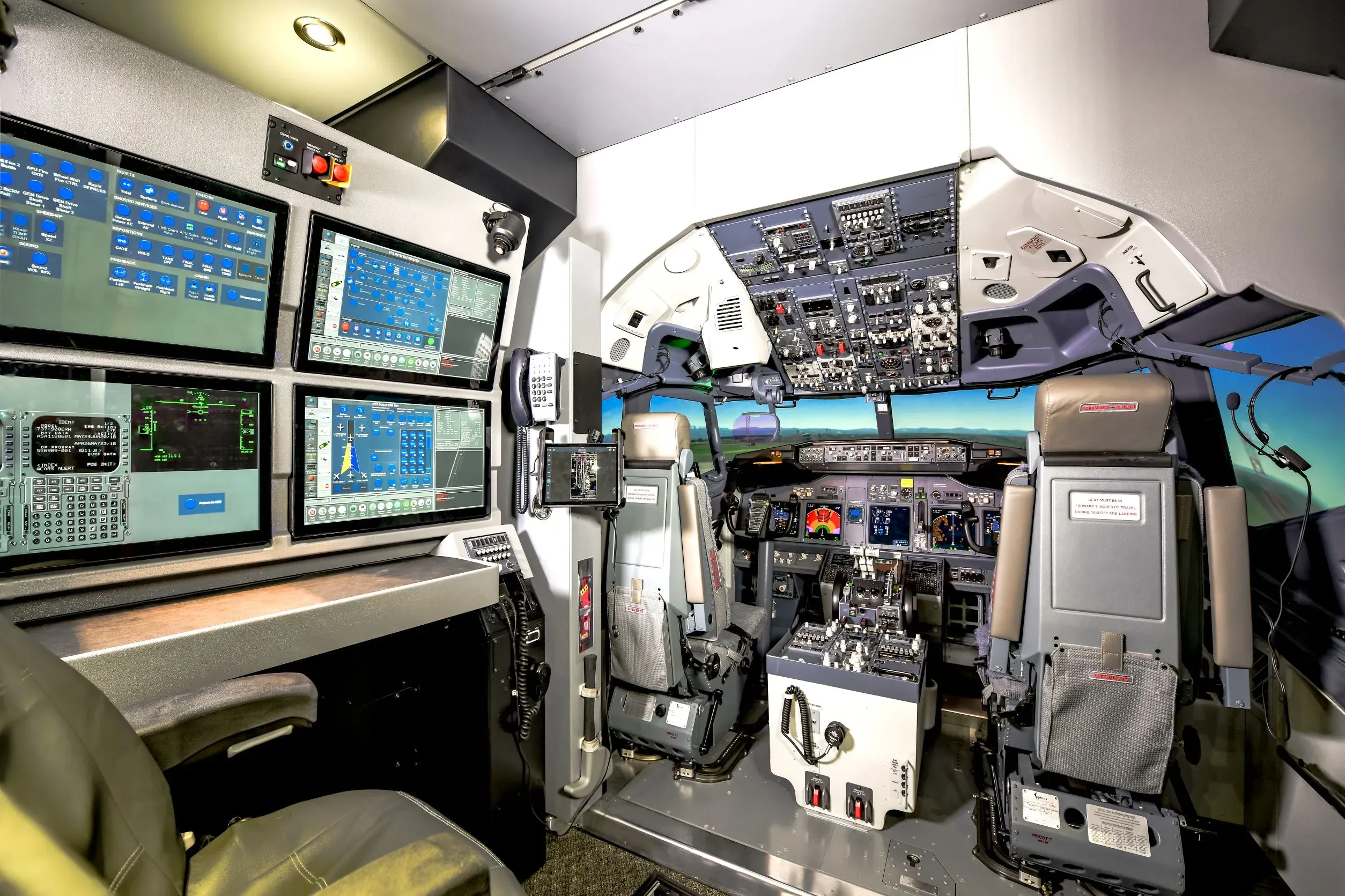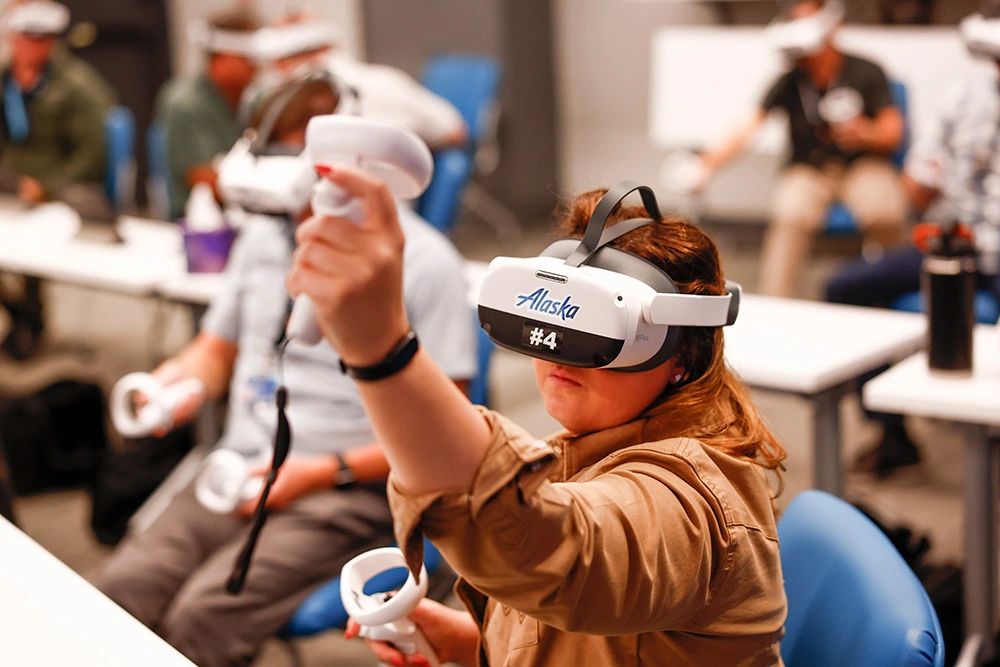Seattle-based Alaska Airlines is investing in its training facility in preparation for several new pilots working for the airline. The facility will be reportedly doubled in size, and five new flight simulators have been ordered to support training.
The airline has also invested in virtual reality (VR) technology to create a new realistic training experience. The carrier said its wholly-owned regional partner Horizon Air, will also adopt the new technology.
“Cutting edge training”
Alaska confirmed earlier this week that hundreds of new pilots are being hired. As the carrier plans to expand its training department and facility in Renton, WA, it also works to ensure that all new hires are up for the task and meet its high standards. The airline said pilot innovation has been a primary focus for years.
“Alaska has been at the forefront of pilot innovation for decades. It’s who we are, and we’re constantly innovating to ensure our pilots receive cutting edge training.”
Welcoming new simulators
Pilots being trained via flight simulators is a standard component of the airline industry. Alaska ordered additional simulators that will be installed at the facility. Two new fixed-base simulators and three new full-motion simulators will be delivered throughout 2023 and will be operational by the end of 2024, according to the airline.
“One day, our pilots are flying into remote communities above the Arctic Circle. The next, they’re flying into some of the busiest airports in the country,” the airline stated. “Our pilots must be able to handle any issue that might arise in flight – from blizzard conditions to congested air space – and we rely on rigorous pilot training standards to safely fly our guests across our network.”
Adding the new simulators brings the total number of simulators to 18 for the carrier’s mainline operations. Horizon Air also expects one more simulator in addition to its current one to continue to train pilots on its single fleet of Embraer E175 aircraft. The wholly-owned regional carrier also reportedly has priority access to a third simulator located in Seattle.
Get the latest aviation news straight to your inbox: Sign up for our newsletters today.
Introducing VR
In its latest innovation, the airline has partnered with VRPilot, a Danish technology company, to virtually reconstruct the flight deck of its Boeing 737 as a training aid for new pilots. During training, pilots typically learn first about the layout of the cockpit and the purpose of every switch and button.
VR will allow new pilots to see inside the flight deck, where they would need to physically turn their necks to see all of the flight deck or lean over to reach a switch. Alaska said VR is a much more realistic teaching tool than photographs in a book or video tutorials.
“Virtual reality will augment existing traditional training techniques where we expect it will result in better-prepared pilots, higher success rates through training and more time for complex instructor-led training activities,” the carrier said. “With this technology, pilots can familiarize themselves with the location of switches before they step into a simulator.”
Horizon Air is also set to introduce VR for its pilots as the technology will additionally provide the sense of working with other workgroups such as maintenance, engineering, ground services, and flight attendants.
Alaska’s Managing Director of Pilot Training, Captain Jeff Severns, said the airline’s training is world-class.
“These significant investments in simulators and emerging virtual reality technology will continue our commitment to rigorous pilot training. The training our pilots receive is truly world class, and we’re proud of the work of our instructors and students every day.”
Source: KING 5 News, Alaska Airlines



